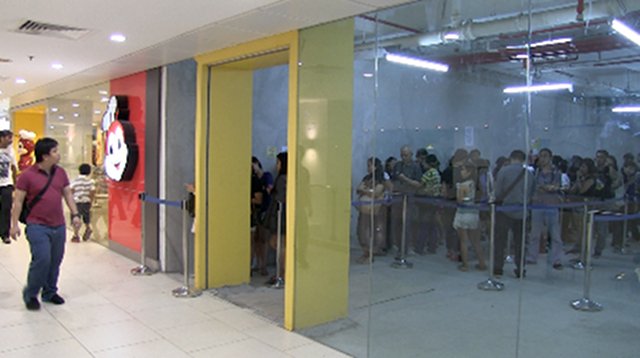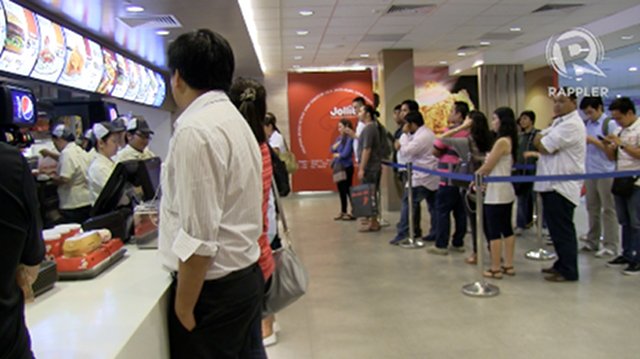SUMMARY
This is AI generated summarization, which may have errors. For context, always refer to the full article.
SINGAPORE – Nearly a month since the first Jollibee opened in Singapore, lines are still out the door, even on weekdays.


You would never know a group of Singaporeans online called for a boycott of the Philippines most popular fast food restaurant. The petition condemns the chain for prioritizing Filipinos for jobs over Singaporeans – a claim Jollibee denies.
Today it is clear most of the customers are overseas Filipino workers. So the real question now is, how long the lines will last?
Under pressure from the public, government is making it more difficult to hire foreign workers.
The Singapore government is slapping higher fees on employers who hire foreigners in some sectors. Come July, it’s lowering the percentage of new foreign service workers from 45% to 40% of a company’s work force. Employers must start paying a higher minimum salary for mid-level workers. And renewing work applications will become more difficult. Read more about those measures here.
It’s very difficult now. There are many companies who want to hire Filipinos but the problem is getting the work passes for them.
MINDA CALAGUIAN-CRUZ
PHILIPPINE AMBASSADOR TO SINGAPORE
Overseas Filipino workers in Singapore like Liz Peruda are feeling the pinch. Her husband’s work pass wasn’t approved. He visits her when he can and is looking for work in the Philippines.
“For Filipinos, even if we hold a good job, even if we hold a high-ranking job, even us, we’re scared. When it’s time to renew our passes, we’ll have that 10% chance that it might not get approved. We’re just really taking advantage of whatever time we have here in
Singapore.”
LIZ PERUDA
CUSTOMER SERVICE REPRESENTATIVE
The restrictions come as many Singaporeans worry that foreigners are taking their jobs and lowering their wages.
“It’s important to understand this entire problem in the context in which it is worrying Singaporeans. That is that Singaporeans must come first and if they’re unable or unwilling then it is ok to bring in foreigners.”
ARUN MAHIZHNAN
SPECIAL RESEARCH ADVISOR, NATIONAL UNIVERSITY OF SINGAPORE
Some residents blame foreigners for raising property prices and putting too much strain on existing infrastructure.
Yet this mega city also needs foreigners to keep it running and take jobs Singaporeans don’t want. The Singaporean population is aging, getting wealthier and has a low birth rate, making foreign workers crucial to help bear the load.
Singapore’s government proposed letting in more immigrants to help boost the population to between 6.5 and 6.9 million by 2030.
This was met by loud protests from Singaporeans.
“When the number 6.9 million was put into the public discourse, they were shocked,”
ARUN MAHIZHNAN
SPECIAL RESEARCH ADVISOR, NATIONAL UNIVERSITY OF SINGAPORE
Singapore’s strength has always been its foresight and planning. Now it needs to find a solution that responds to both public clamor and economic reality.
Katherine Visconti, Rappler, Singapore. – Rappler.com
Add a comment
How does this make you feel?
There are no comments yet. Add your comment to start the conversation.